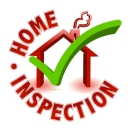Few things are more misunderstood about the home than attic ventilation. In essence, all ventilation is about circulating air to keep it fresh and to reduce moisture levels. The American Institute of Architects estimates that 90 percent of homes in the U.S. have unacceptably high levels of moisture. Understanding whether your home could benefit from some form of attic ventilation might just be, if not a life-saver, a roof-saver. Here are some of the myths and the facts you need to know about attic ventilation.
1. More Attic Ventilation is Good: Just like properly sizing your furnace and air conditioning unit, you want precisely the right amount of attic ventilation for your home. Insufficient ventilation can lead to moisture problems during the winter and decreased energy efficiency during the summer, but too much ventilation can be just as bad, if not worse. Roof vents create an additional roof penetration—essentially another place of vulnerability where leaks can occur. Some vents are necessary, but you don’t want to needlessly increase the number of roof penetrations. More than leaks, these seams can cause blowouts during a hurricane or allow sparks from a wildfire to enter your home and set it ablaze.
2. Roof Vents are for Warmer Climates: Too many people believe the importance of roof ventilation is to increase energy efficiency during the summer. Good roof ventilation can do this, but shingling color, sun exposure, and insulation are exponentially more important to overall energy efficiency than ventilation. Sure, installing roof vents for older homes can reduce your cooling load during the summer, but there are probably more low-risk, cost-effective ways to increase your home’s energy efficiency.
Meanwhile, preventing moisture damage is a much greater benefit and applies to colder climates more than warmer ones. In fact, the colder the climate, the more likely it is that your home will benefit from attic ventilation. In order to install an unvented roofing system in colder climates, you’ll need highly rated, rigid insulation to prevent condensation on your roof sheathing. In warmer climates, you don’t need to worry about condensation—think about how often dew forms on your grass. In these climates, hot attic spaces are eliminated by installing a thermal barrier along the roof line, instead of the attic floor.
3. Roof Vents Remove Warm Air during the Winter: Too many people believe that because heat rises, ventilating an attic space during the winter means you’re releasing warm air and creating a drag on your heating efficiency. If this is true, you’ve got bigger problems to worry about than letting warm air escape from your home. Poor insulation is usually the culprit, although if you enter the attic on sunny, winter day, your attic space can be warmed by the sun more than your furnace.
Unless your roofing system has insulation on the roofing deck and is designed without ventilation, your furnace should not be heating your attic. Worse yet, inadequate insulation is almost surely allowing moisture-laden air into your attic. When this warm, moist air hits your roof, it’s likely to form condensation that will lead to further deterioration of your insulation and/or wood rot. If you think this might be a concern, wait till the sun goes down and measure the temperature in your attic. It should be pretty close to the outdoor temperature.
The ideal roof / attic ventilation would consists of combination of vents located in upper section of the attic (ridge vents, turbine, box shaped or dome static vents, electric motor powered vents), vents installed along the bottom parts of the roof overhang, called intake, or soffit vents, hip vents, and / or gable vents. Roofs with no, or very small overhang might be able to utilize “vented drip edge” .
Do not combine attic gable vents with roof soffit and ridge / upper roof vent systems – it will disturb attic ventilation process.
Industry standard for proper attic ventilation recommends (for no vapor retarder type of attic insulation – no paper, plastic or aluminum layer between the attic floor and insulation layer) 1 sq. foot of ventilation for every 150 sq. feet of attic space divided 50 / 50 between the inlets and outlets.
For vapor retarder equipped attic insulation (for example fiberglass blankets/bats with paper facing), you should have 1 sq. foot for every 300 sq. feet of attic space – assuming that everything else is perfect…
CAUTION: There are some that think the absolutely opposite, and seal all of the attic ventilation ports, sometimes insulate roof decking, assuming that such action will lower the utility bill. They call this a “hot” roof. Unfortunately, by doing that, they are creating the ideal mold growing environment (moist and warmer than exterior). I have personally seen attics with spray foam on the roof sheathing, no venting and water dripping from the spray foam insulation and mold growing on all exposed lumber.
You can partially determine how good is your attic ventilation by examining roof surface during the winter (from the ground of course!). After some snow accumulates on pitched roof surface, monitor it over the next few days, and if roof remains snow covered, there’s a good chance, that your attic ventilation and attic floor insulation is adequate, and whatever heat is being transferred through the attic floor (house ceiling), and all other penetrations between the house and attic area has enough escape routes.









